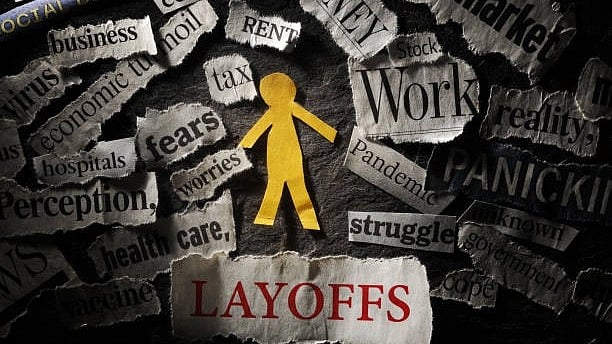
Representative image of employee layoffs.
Credit: iStock
By Sarah Green Carmichael
Doug had been pressuring Ed and Alvy to lay off a portion of their scrappy little division. Ed and Alvy didn’t want to do it, but the parent company was struggling, and it seemed as if push had finally come to shove.
They showed up in Doug’s office the next morning with a list of two names: their own.
Doug backed off.
This story is recounted in a new book by Stanford professors Robert Sutton and Huggy Rao, The Friction Project: How Smart Leaders Make the Right Things Easier and the Wrong Things Harder. They offer it as an example of “shielding”, in which managers “deflect and absorb the (expletive) than rains down from above”.
The story of Ed and Alvy is a goodie but an oldie — they wielded their shields in 1985. Mass layoffs had only emerged as a phenomenon a few years earlier, in the late 1970s, and were then perceived as a sign of a company in serious distress.
In 1979, less than 5 per cent of Fortune 100 companies announced layoffs, according to scholarship by sociologist Art Budros. Even in the 1980s, when downsizing started to become more common, executives who relied on it were called “corporate killers” and given nicknames like “Neutron” and “Chainsaw”.
Oh, how times have changed. In 1994, almost 45 per cent of the largest US companies announced layoffs. Downsizing was by then no longer a sign of a business in trouble. It had become a routine management practice — and is even more of one now.
My quick tally of cuts announced in 2023 suggests 58 per cent of the Fortune 100 announced layoffs last year, including Citigroup Inc., Goldman Sachs Group Inc. and tech giants Meta Platforms Inc., Microsoft Corp. and Google parent Alphabet Inc.
Another 5 per cent already announced job cuts in the first month of 2024. Some of these companies also downsized in 2022 and 2021. With pink slips so common and seemingly random, no wonder Gen Zers think nothing of posting footage of their layoffs on TikTok.
Downsizing is routine in the US economy.
Credit: Bloomberg Photo
The ubiquity of layoffs has convinced a generation of managers that there’s no other way to do business — that periodic downsizing is necessary, even beneficial to companies.
But it’s not. Regular layoffs are a perfect example of a widespread yet deeply corrosive business practice. They hurt people, companies and society.
The people who get axed suffer psychological and financial distress, of course, but there also are costs to organisations that regularly lay people off.
Managers become lazier about the difficult work of hiring, coaching and giving feedback — just bring on a bunch of warm bodies and let HR cut anyone who doesn’t work out.
Among layoff survivors, morale and engagement sink and turnover increases. Researchers estimate these effects linger for about three years, when another layoff will likely come along.
And downsizing rarely has the hoped-for financial effect. Profitability suffers, as do measures of innovation, quality and safety. Although investors may greet layoffs with higher stock prices for a day or two, in the long run, layoffs are associated with flat or declining share prices, particularly when they don’t reflect a shift in corporate priorities.
An economy that grows numb to mass layoffs experiences a decline in trust. “Layoffs break trust by severing the connection between effort and reward,” as Sandra Sucher and Marilyn Morgan Webster of Harvard Business School put it. The result is a deep cynicism about the value of loyalty.
Everyone, I think, understands that poor performers can be terminated or that employees who continually clash with their bosses are at risk of getting sacked.
But when someone toils dutifully for the company for 20 years only to be let go for a vague reason like “restructuring”, it breaks the psychological contract between employers and employees.
Nonetheless, layoffs have become an ingrained part of the economy. These days, it is hard to imagine a manager taking a stand like Ed and Alvy, or even seeing the point.
As for those two, their parent company soon sold their little division to an out-of-work tech executive.
Ed and Alvy are, of course, Ed Catmull and Alvy Ray Smith. The people they fought so hard to protect became Pixar. The unemployed guy who bought their team was Steve Jobs, who paid $5 million for it 1986 and sold it to Walt Disney Co. for more than $7 billion in 2006.
But that was a long time ago. In 2024, with its parent company again struggling, Pixar reportedly plans … layoffs.